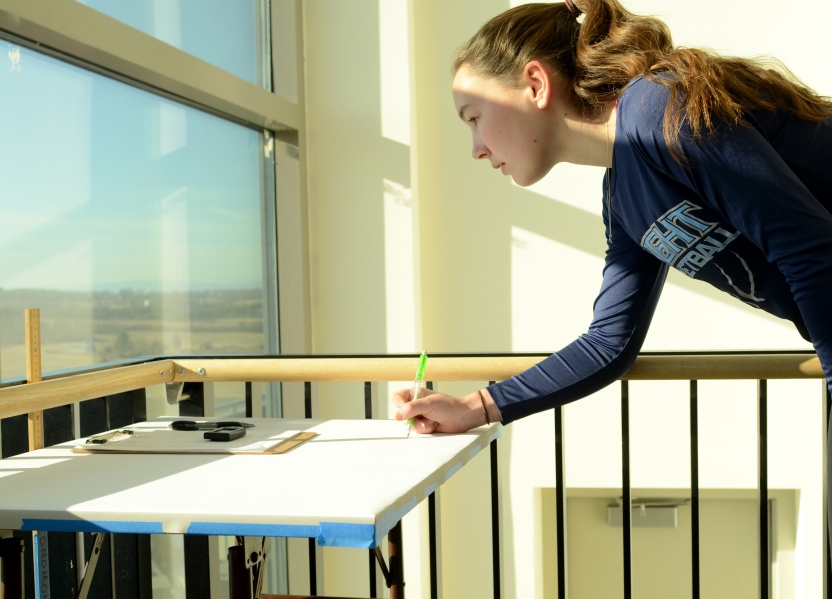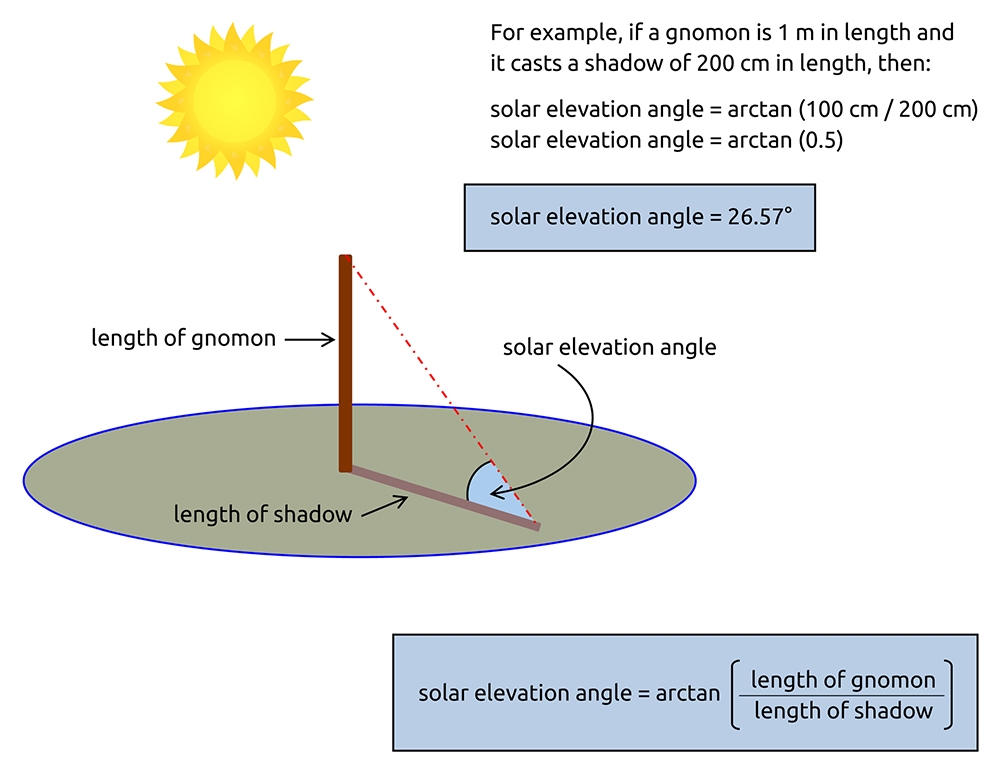J-term Scenes: Measuring the Earth as the Ancients Did

MIDDLEBURY, Vt. – On one of the few sunny days in January, students in the Ancient Astronomy winter-term class experimented with the earliest-known astronomical instrument – a simple stick – to perform calculations like a Greek mathematician did in the third century B.C.
A “gnomon,” or a vertical stick that projects a shadow, was used by the students in Assistant Professor Eilat Glikman’s class to find cardinal north, track the path of the Sun, determine “local noon” when the Sun is highest in the sky, and measure the angle of the Sun’s altitude.
Eratosthenes (276–194 B.C.) used a gnomon and his knowledge of mathematics to accurately estimate the radius and circumference of the Earth. Eratosthenes discerned that on a certain day of the year when the Sun was directly overhead at noon in one location (Syene, Egypt), the Sun was not directly overhead at second location (Alexandria) hundreds of miles away. By knowing the distance between the two cities and the Sun’s precise angle of elevation at noon on that given day at Alexandria, he was able to calculate the size of planet Earth.
Glikman’s J-term students replicated a portion of Eratosthenes’ experiment on Monday, January 16. Based on the forecast for sunshine, an email went out over the weekend asking students in the class to sign up for one of the 22 time slots between 10 a.m. and 2 p.m. Prof. Glikman and Jonathan Kemp, Middlebury’s telescope specialist, set up a gnomon on the seventh floor of McCardell Bicentennial Hall and made the first measurement. Then, one by one, the students arrived at their appointed times and marked the length and position of the gnomon’s shadow on a large sheet of paper.

A psychology major, Anna Hubbell ’19.5, made the 10:30 a.m. measurement and said, “Ancient Astronomy might not be a class I would normally take, but it sounded interesting and J-term is a great opportunity to try something new. This gnomon experiment is pretty fascinating!”
But after tracking the path of the Sun for a few hours, the students’ work was only just beginning.
To complete their assignments, each undergraduate needed to grasp the concepts of shadow astronomy and use mathematics to determine the sun’s highest elevation angle on January 16 in Middlebury. (See illustration at right.) They also used observations from other sites around the world to determine each location’s latitude, used observations on an unknown date in Vermont to estimate both solar declination angle and the date of the observations, and much more.
Since the class performed only a single-site observation on January 16, they were unable to calculate the circumference of the Earth as Eratosthenes did. However, there are plans afoot to do multi-site measurements on a specified date and time with astronomy colleagues at Bennington, Williams, Wesleyan, and Vassar Colleges during the last week of winter term – if and when another sunny day presents itself in the Northeast.

